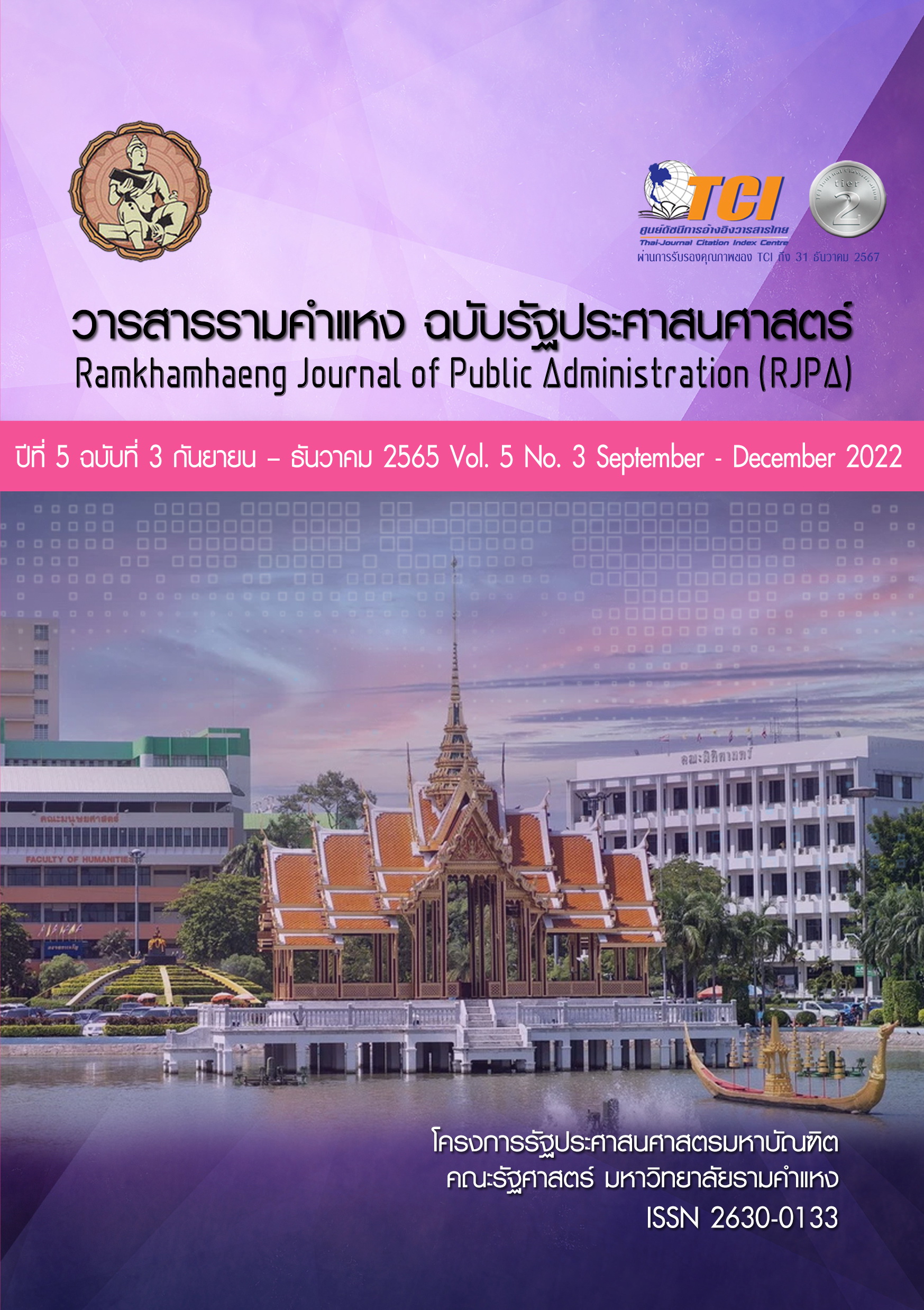Guidelines for addressing problems and obstacles of Technology Crime Suppression Division Officers
A case study of online fraud offences
Keywords:
problems and obstacles, technology crime, online fraudAbstract
The objectives of this study are 1) to identify the patterns of online fraud offences, 2) to examine problems and obstacles that Technology Crime Suppression Division (TCSD) officers have encountered in their work related to online fraud offences, and 3) to propose a guideline for addressing those problems for TCSD officers investigating online fraud offences. A qualitative research method was employed to collect data through in-depth interviews with a total of 10 key informants. The retention period is 5 months.
According to research findings, it was found that the most prevalent pattern of online fraud is an online shopping scam. There were five aspects of the problems and obstacles that the TCSD officers encountered in their investigation on online fraud offences, including 1) the delay of documentary evidence collection from external agencies, 2) IP address identification for offender tracking, 3) the work efficiency of TCSD police officers, 4) the complexity of online fraud offences, and 5) legislation and punishment. Therefore, this research recommended four aspects of guidelines to help address the problems and obstacles, including 1) inter-agency cooperation and collaboration, 2) the development of technological knowledge and skills for TCSD officers, 3) law enforcement and more severe punishment, and 4) prevention campaign and awareness-raising for the public.
References
กองบังคับการปราบปรามการกระทำความผิดเกี่ยวกับอาชญากรรมทางเทคโนโลยี. (2565). สถิติเกี่ยวกับการกระทำความผิดฐานฉ้อโกงออนไลน์. กรุงเทพ: สำนักงานตำรวจแห่งชาติ.
ณัฐพัฒน์ ศิริพงศ์วรรธนะ และพงษ์พิษณุ ภักดีณรงค์. (2558). การพัฒนางานด้านการตรวจพิสูจน์อาชญากรรมคอมพิวเตอร์ของสำนักงานตำรวจแห่งชาติ และกรมสอบสวนคดีพิเศษ. วารสารบัณฑิตวิทยาลัย มหาวิทยาลัยราชภัฎสวนดุสิต, 3(11), 85-93.
ณัฐวุฒิ กลิ่นเกษร .(2564). แนวทางการเพิ่มประสิทธิภาพการปฏิบัติงานบริการประชาชนของเจ้าหน้าที่กองบังคับการปราบปรามการกระทำความผิดเกี่ยวกับอาชญากรรมทางเทคโนโลยี. วารสารอาชญาวิทยาและสังคมศาสตร์, 3(1), 76-89.
ณัฐธรณ์ เดชสกุล .(2563). ปัญหาการฉ้อโกงซื้อขายสินค้าทางอินเทอร์เน็ตในประเทศไทย.งานประชุมวิชาการระดับชาติมหาวิทยาลัยรังสิต ประจำปี 2563. หน้า 1141-1151.
ณรงค์ กุลนิเทศ. (2557). รูปแบบและมาตรการแก้ปัญหาอาชญากรรมไซเบอร์. กรุงเทพฯ: มหาวิทยาลัยราชภัฏสวนสุนันทา.
ประมวลกฎหมายอาญา พ.ศ. 2560, เล่ม 134 ตอนที่ 32 ก (2560).
สำนักงานยุทธศาสตร์ตำรวจ กองวิจัย. (2559). การวิจัยเพื่อพัฒนากระบวนการสืบสวนและสอบสวน ของเจ้าหน้าที่ตำรวจในการรับมือกับอาชญากรรมคอมพิวเตอร์.กรุงเทพฯ: สำนักงานตำรวจแห่งชาติ.
หทัยชนก พิมพะกุล .(2562). สาเหตุของการตกเป็นเหยื่อในคดีฉ้อโกงซื้อขายออนไลน์. ใน การประชุมวิชาการนำเสนอผลงานวิจัยระดับชาติ ครั้งที่ 3 “Graduate School Conference 2019”. หน้า 792-800.
Akers, R L. (1985). Deviant Behavior: A Social Learning Approach (3rd ed.) Belmont, CA: Wadsworth.
Becker, G. S. (1976). The economic approach to human behavior. Chicago: University of Chicago Press.
Cohen, L.E. and Felson, M. (1979). Social Change and Crime Rate Trends: A Routine Activity Approach. American Sociological Review, 4(44), 588–608.
Sutherland, E. H. (1947). Principles of Criminology (4th Ed.). Philadelphia: J. B. Lippincott.
Downloads
Published
How to Cite
Issue
Section
Categories
License
Copyright (c) 2025 กรฉัตร มาตรศรี, ธรรมวิทย์ เทอดอุดมธรรม

This work is licensed under a Creative Commons Attribution-NonCommercial-NoDerivatives 4.0 International License.



